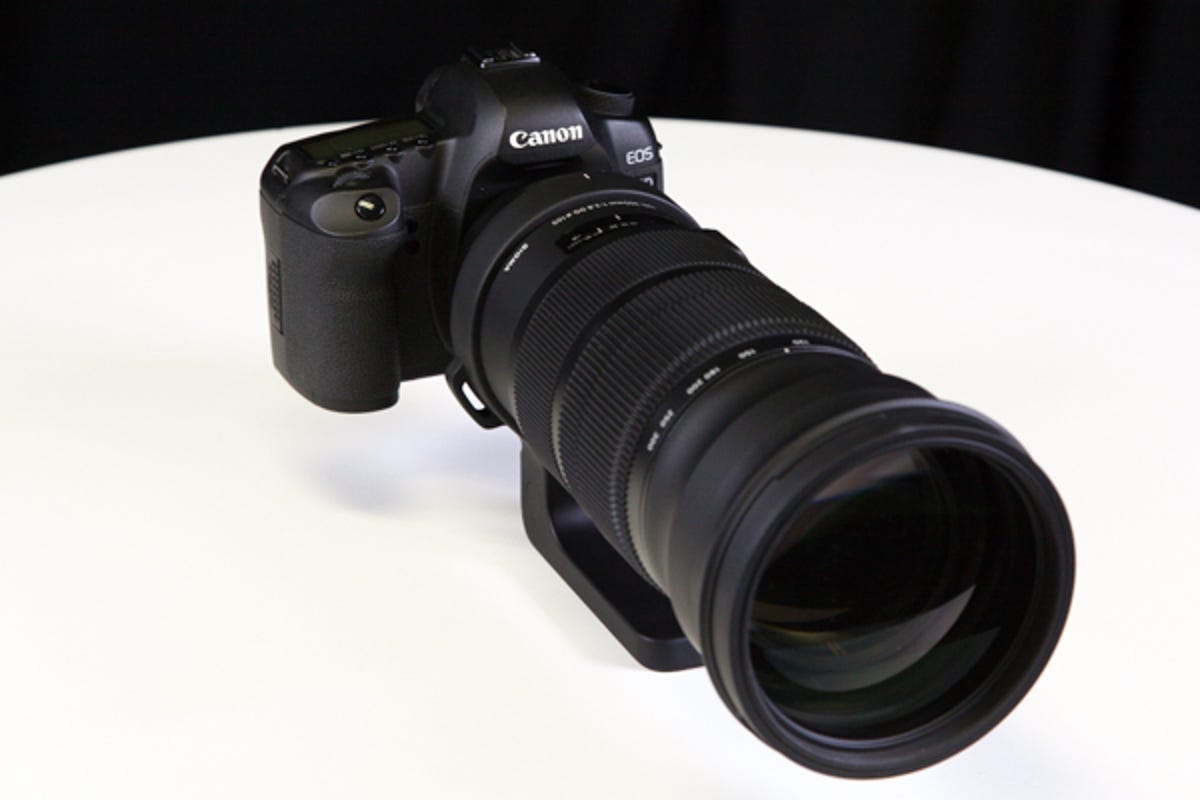
Telephoto lenses are designed to offer great performance for enthusiast and professional photographers shooting sports, wildlife or general landscape photography.
Third-party lens manufacturer Sigma has just released its 120-300mm f/2.8 DG HSM OS Sports lens to meet the needs of photographers looking for an alternative to first-party glass. At a relatively affordable price point of AU$3499, it offers a fast continuous aperture and weather sealing for extreme situations.
Optically, it is the same as its predecessor, but the new Sports version is compatible with the Sigma lens dock that lets photographers upgrade firmware and tweak options like autofocus and image stabilisation from within the software. The dock is a separate purchase, though, and we weren't supplied with one of these units to test, so we can't comment on any of the customisation options.
If you'd like to check out MTF charts for this particular lens, Sigma has provided those on its website. We set out with the 120-300mm in tow for some everyday shots of landscapes and fast-moving subjects to put it through its paces.
There's no chance that you will look inconspicuous when shooting with this lens. At a touch under 3.4kg on its own, and with an overall length of 29cm, it will be hard to blend into the crowd with this piece of kit. The lens features an internal focusing and zooming mechanism, so there's no change in the physical length of the lens. The filter thread is a whopping 105mm and weather sealing is provided.
We tested the 120-300mm alongside a Canon 5D Mark II, no teleconverter or filters applied. All photos were taken in RAW and processed in Lightroom. Any colour adjustments are noted, and lens corrections from the profile have been applied.

Provided with the lens itself is a giant hood, tripod column and padded nylon case. But on its own, many passers-by noted that the 120-300mm could almost be mistaken for a giant lens thermos mug when carried by its tripod column.
The focusing and zoom ring feel quite solid when you first pick up and start to use the lens, but in practice, this allows for effective handling. The focus ring rotates fully, and doesn't lock at either end, and the resistance makes it easy to grab precise focus without overstepping the mark.
On the side of the lens are a number of switches for auto/manual focus, focus limiting and a custom switch that lets you have personalised options (set through the USB dock) ready at the flick of a switch. There are two levels of image stabilisation provided, the first for regular shooting situations and the second for fast-moving situations such as panning.
It was a bit of an overcast day on our first outing with the 120-300mm, but that didn't stop the lens from delivering some good results. A slight tweak of levels in Lightroom adds more interest to the Sydney skyline. This photo was taken at 182mm.
A spot of birdwatching comes next, with the lens able to lock on to this cheeky kookaburra without any fuss.
This lens is designed to meet the needs of photographers who want to capture fast-moving action, so what better way to see how it copes than by snapping a pouncing pooch. The lens locked on to the subject in under a second and maintained focus throughout this burst of shots. In action situations, you have the option of using the focus limiting switch to help the lens seek focus more quickly if you know that your subject will be less than 10 metres away, or between 10 metres to the infinity range. Alternatively, you can keep the limiter on the full range, which keeps all your options open, but for true telephoto work, the lens performs much more quickly when the limiter is set to 10m-infinity.
Overall, the 120-300mm has little distortion to compensate for at the widest end. Applying the lens correction profile in Lightroom does show a slight degree of vignetting at the corners of the frame, though in some situations such as in the photograph above, this could be quite desirable.
At f/2.8, there is a small degree of chromatic aberration present, but this can be corrected in post. Plus, the bokeh when shooting at f/2.8 is particularly creamy and round shaped, giving a very attractive finish.
Now for a visual comparison of both extremes of the focal length range: at the top, 120mm, and at the bottom, 300mm. Slight colour boost in Lightroom.
Photos resized for web are all well and good, but they don't demonstrate the full capabilities of this lens. Here is a 100 per cent crop from an unedited photo from the 120-300mm lens, taken at the 300mm extreme (1/2000, f/7.1, ISO 400 handheld). There is a little softness, but overall a good result.
The 120-300mm lens is incredibly fun to shoot with, though its size and weight makes it pretty cumbersome when shooting handheld. The lens delivers particularly contrasty results when photographing in daylight situations, which can be very desirable for situations like sports and landscape photography.
Click here for a full-resolution JPEG of the image above to check out the sharpness of the lens. Exposure: 1/1600, f/5, ISO 400.
Beyond its main remit of sports and wildlife photography, the 120-300mm delivers great results in a wide range of situations, like landscapes. While there isn't a direct comparison in overall focal length from a first-party manufacturer like Nikon or Canon, it could be compared to the new Canon 200-400mm lens with a teleconverter attached. We'll aim to get some comparisons done once a review model of the Canon lens makes its way to the CNET Australia labs.

